Pacifica Leads Minivan Resurgence with Hybrid Tech
By John Gilbert
Picture yourself driving along any scenic and winding highway. In my case, it’s revisiting Highway 61 on the North Shore of Lake Superior. The drive is effortless, allowing you to enjoy a beautiful day while sitting in a comfortably supportive bucket seat, gripping a nice handful of steering wheel. You enter smoothly and then accelerate, just as smoothly, coming out of the curve. The almost silent response of high-tech power is amplified by the stable, well-planted feel of the suspension, and the precise agility of the steering is more imnpressive when you push it a little.
Obviously, you’re driving a sports sedan or maybe even a sports car, with capabilities that reach beyond your demands, particularly with the speed limit in mind.
But no. You are driving a minivan. Come on, minivans are boring, aren’t they?
Well we’re not talking about “just” a minivan. This is the 2019 Chrysler Pacifica, which is the contemporary standard among ultimate family haulers. And this one is one giant step beyond, being the Hybrid Limited model, which detunes the 3.6-liter V6 from its standard duty, and then bolsters that tuning by the potent punch of a hybrid electric system, with a plug-in adaptor.
The result gives the Pacifica Hybrid 260 horsepower of roadworthiness, and until you try one yourself you’ll have to trust me on this: The Pacifica Hybrid takes off with startling acceleration from a stoplight or from the need to pass from normal speed.
The beauty of the Pacifica Hybrid is that if you bought one and didn’t know it was a hybrid, you would simply think you got a more powerful engine than you intended to. The flip side of the usual equation — more power less fuel economy — is that the Pacifica Hybrid can readily attain 30 miles per gallon in combined city-highway driving, with combined gas-electric power.
In my week-long test, where the winding road most covered was Highway 61 along the North Shore Drive of Lake Superior, my recharging consisted entirely of what I could generate from the engine and the regenerative braking energy capture from braking. The test vehicle had two features that I was unable to fully exploit — numerous storage bins in virtually every panel and under the seats for one, and locating the special plug-in adaptor that I could use for the plug-in feature of the hybrid.
When driving a fully charged hybrid, you can drive moderately for a few miles, usually enough to get to work and home again, as well as using the power to augment the gas engine power. When you do plug in the adaptor, you can go from the gas-only mileage estimate of 30 mpg to a whopping 82 miles per gallon using the electric power and gas power. The best part is that if you have 240-volt plug-in, you can get a full charge in two hours.
My inability to find the charging cable no matter how many of the umpteen cubicles and storage bins I searched, was that apparently the last previous journalist who test-drove this vehicle must have kept the cord, because it wasn’t reunited with the Pacifica until the agents from the press-fleet operation in Chicago came to retrieve it. The cable fits into a neat pouch provided for that, and in a bin just inside the hatch on the left wall.
So I got my high of 32 miles per gallon without a fully charged battery pack. My net trick is to coax FCA to send the Pacifica Hybrid for a return engagement so I can see how high I can coax that fuel economy.
As I’ve written many times, in the next few years we will all be changing over to some form of electrified vehicles, ranging from basic hybrids up to plug-ins and on to full electric. There is no need to fight it, or even be reluctant to make the move, because I can only see benefits, with no minus sides.
The test Pacifica was equipped with all the elements that boosted the Pacifica to the highest echelon of the industry, far beyond the grasp of the old Dodge Caravan or Plymouth Voyager, or the upscale Chrysler Town and Country. Those were legendary for their utility and durability, and we probably all know people who put 200,000 miles on a Caravan, then gave it to an offspring or relative who put another 100,000 on it.
The new Pacifica shares those attributes, but with a new and stiff platform it starts out with a stylish exterior, with flowing creases and lines, coming off a stunning and contemporary grille with its headlight enclosures streaming gracefully off that grille. It also has all the current safety and connectivity stuff, like remote start, blindspot and cross-path detection, auto-dimming lights, and such things as stow-and-go second-row seats that fold down and can be tucked into those floor-located storage bins for a flat floor and more storage space.
Also, the option list includes a 760-watt amplifier on the 20-speaker Harmon Kardon audio system, a 360-degree overhead camera view, plus forward collision warning, lane-departure warning, adaptive cruise with stop-and-go shutoff at stoplights, and an amazing parking assist device for both parallel and perpendicular parking — with a stop feature. Some of the first parking assists would park your car without you touching the steering wheel, but after getting you into the parallel parking spot, it wouldn’t brake and would allow your car to cave in the grille of the car parked behind you.
There are other impressive vans out there for competition, mainly the Honda Odyssey and the Toyota Sienna, but none can match the brilliant planning and execution of the Pacifica.
For example, it has a built-in vacuum cleaner, which followed Honda’s lead, but the Pacifica’s device is stashed right near the sliding driver-side door, where it might be most-used. Those sliding doors, and the rear hatch, will operate at the touch on the handle, or by the key-fob, or, with the fob in your pocket, by reaching your foot under the vehicle, which is great for when you’re carrying parcels and especially in foul weather.
The stability of the front-wheel-drive Pacifica is also complemented by keeping your kids, or other passengers, happy and entertained inside. You can haul seven or eight, depending on whether you choose the taller captain’s chairs or the three-seat bench for the second row. First, you slide the door open, flip a switch to tilt the seat forward or tumble it, which allows for easy and even graceful entry to the third row, which will house occupants of any size.
When you’ve filled the van with people, they have the panoramic sunroof to improve their domain, and it has a third pane for the way-back riders, beyond the oversized front sunroof. In the back of the front bucket headrests there are a pair of fold-up video screens, and in the backrest pouch you have wireless headphones. Separate controls allow rear-seat riders two alternatives for videos, DVDs or video games via the Blu-Ray player, which should take care of most of the disagreements kids might have fighting over control or choice of video. As well as putting to rest the “Are we there yet?” questions.
The whole minivan thing seemed to go out of our consciousness a couple decades ago, when families that sought them out to replace the family station wagon from an earlier era, suddenly tired of them and declared them boring and unexciting. That led to the move toward giant SUVs, and I can’t even count the number of times people asked men for advice about what to buy to haul their family with three or four kids, and when I’d suggest a minivan they’d have the same answer: “Oh, I’d never buy a minivan.”
Instead, they would choose an oversized, overpowered, and under-economied SUV and settle for 8 mpg to prove they were “with it.” Through those years, some minivans went out of production, but Chrysler and now FCA have soldiered on, continuing to build the minivans that were bought with an almost embarrassed attitude.
The Pacifica changed all that, and the Odyssey kept pace. Now the new Pacifica, with its hybrid version, sets a new pinnacle. In fact, a month ago, Motor Trend decided to do a novel “head-to-head” competition for best family vehicle. It chose an array of sedans, midsize and compact SUVs, and compared them in tournament-style competition. The Pacifica beat out the Odyssey, and advanced to the “semifinals,” outpointing every other candidate to win the entire thing.
It was probably the most politically correct method for obscuring the upcoming choice, while still selecting the best family-hauling vehicle.
I couldn’t agree more, and the margin of victory grows when you add in the fun-to-drive quotient along with the spirited performance, steering, versatility and the ability to not only take a family trip to visit relatives, but volunteering to take the whole gang out for adventure.


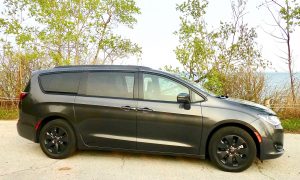
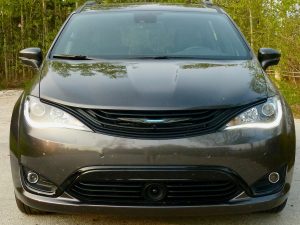
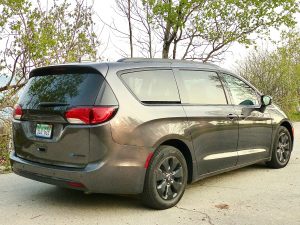
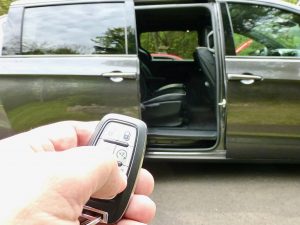
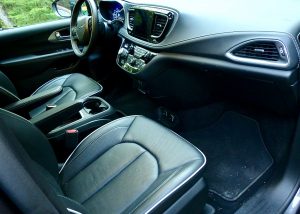
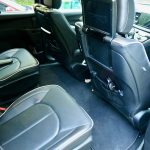
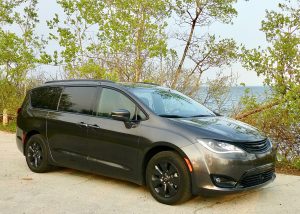
 John Gilbert is a lifetime Minnesotan and career journalist, specializing in cars and sports during and since spending 30 years at the Minneapolis Tribune, now the Star Tribune. More recently, he has continued translating the high-tech world of autos and sharing his passionate insights as a freelance writer/photographer/broadcaster. A member of the prestigious North American Car and Truck of the Year jury since 1993. John can be heard Monday-Friday from 9-11am on 610 KDAL(www.kdal610.com) on the "John Gilbert Show," and writes a column in the Duluth Reader.
John Gilbert is a lifetime Minnesotan and career journalist, specializing in cars and sports during and since spending 30 years at the Minneapolis Tribune, now the Star Tribune. More recently, he has continued translating the high-tech world of autos and sharing his passionate insights as a freelance writer/photographer/broadcaster. A member of the prestigious North American Car and Truck of the Year jury since 1993. John can be heard Monday-Friday from 9-11am on 610 KDAL(www.kdal610.com) on the "John Gilbert Show," and writes a column in the Duluth Reader.